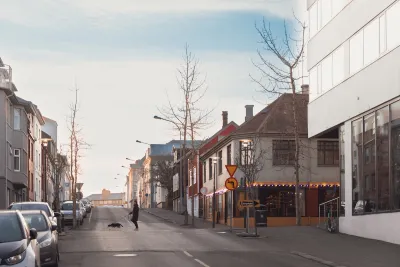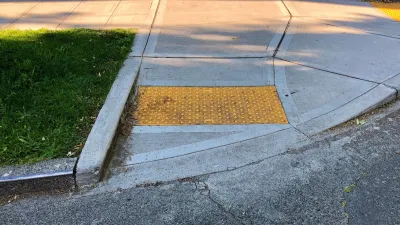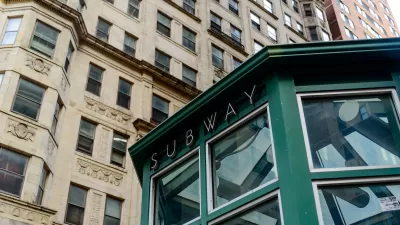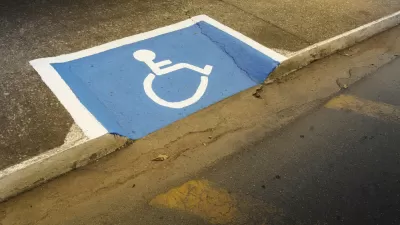Cities around the country installed over 1,700 wheelchair ramps in the last five years, thanks in part to one man’s initiative.

A small organization that began in Reykjavík, Iceland has grown into a veritable movement, installing almost 2,000 wheelchair ramps in public spaces all over the country where accessibility was an issue. As Margaret Andersen explains in Fast Company, “In many older cities around the world, accessibility standards are inconsistent, and the push to retrofit historic areas is often delayed or deprioritized in favor of architectural preservation.”
The project, called Ramp Up Iceland, designs ramps individualized to each location that work with existing materials and aesthetics. “In many cases, passersby wouldn’t even notice modifications to the historic buildings because the ramps are intentional design choices built into the urban environment.” The project was initially started and funded by Haraldur “Halli” Thorleifsson, a tech entrepreneur who uses a wheelchair, but has grown into a partnership with local governments and other groups.
A study conducted in the United States, where federal law technically requires accessibility in all public spaces, found that 60 percent of people with a disability were unable to complete a necessary task because they couldn’t access a building, and sidewalks and transit facilities remain inaccessible in many U.S. cities.
FULL STORY: Iceland built 1,756 wheelchair ramps in the past 4 years. Why can’t other countries do that?

Alabama: Trump Terminates Settlements for Black Communities Harmed By Raw Sewage
Trump deemed the landmark civil rights agreement “illegal DEI and environmental justice policy.”

Planetizen Federal Action Tracker
A weekly monitor of how Trump’s orders and actions are impacting planners and planning in America.

The 120 Year Old Tiny Home Villages That Sheltered San Francisco’s Earthquake Refugees
More than a century ago, San Francisco mobilized to house thousands of residents displaced by the 1906 earthquake. Could their strategy offer a model for the present?

LA’s Tree Emergency Goes Beyond Vandalism
After a vandal destroyed dozens of downtown LA trees, Mayor Karen Bass vowed to replace them. Days later, she slashed the city’s tree budget.

Sacramento Leads Nation With Bus-Mounted Bike Lane Enforcement Cameras
The city is the first to use its bus-mounted traffic enforcement system to cite drivers who park or drive in bike lanes.

Seattle Voters Approve Social Housing Referendum
Voters approved a corporate tax to fund the city’s housing authority despite an opposition campaign funded by Amazon and Microsoft.
Urban Design for Planners 1: Software Tools
This six-course series explores essential urban design concepts using open source software and equips planners with the tools they need to participate fully in the urban design process.
Planning for Universal Design
Learn the tools for implementing Universal Design in planning regulations.
Ada County Highway District
Clanton & Associates, Inc.
Jessamine County Fiscal Court
Institute for Housing and Urban Development Studies (IHS)
City of Grandview
Harvard GSD Executive Education
Toledo-Lucas County Plan Commissions
Salt Lake City
NYU Wagner Graduate School of Public Service





























